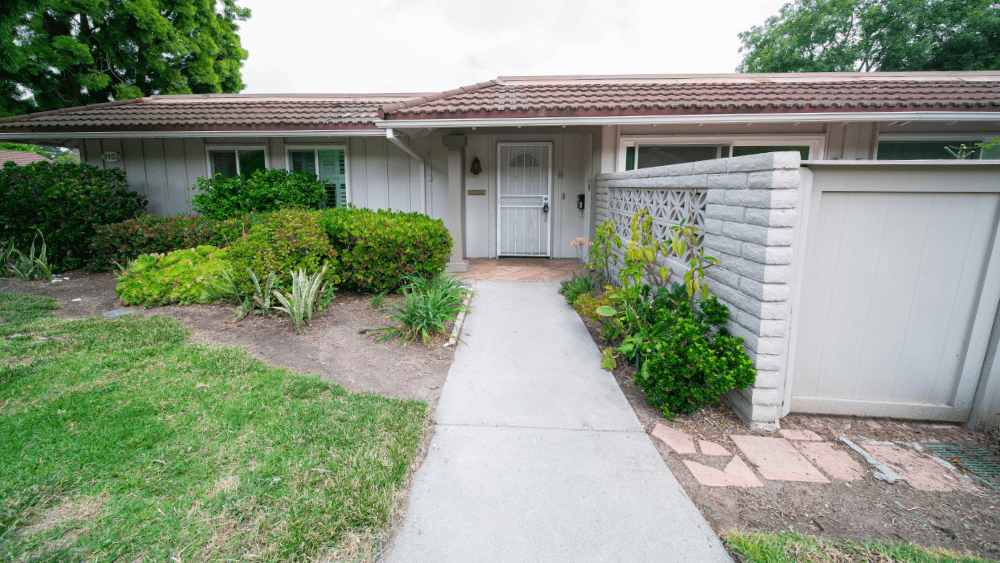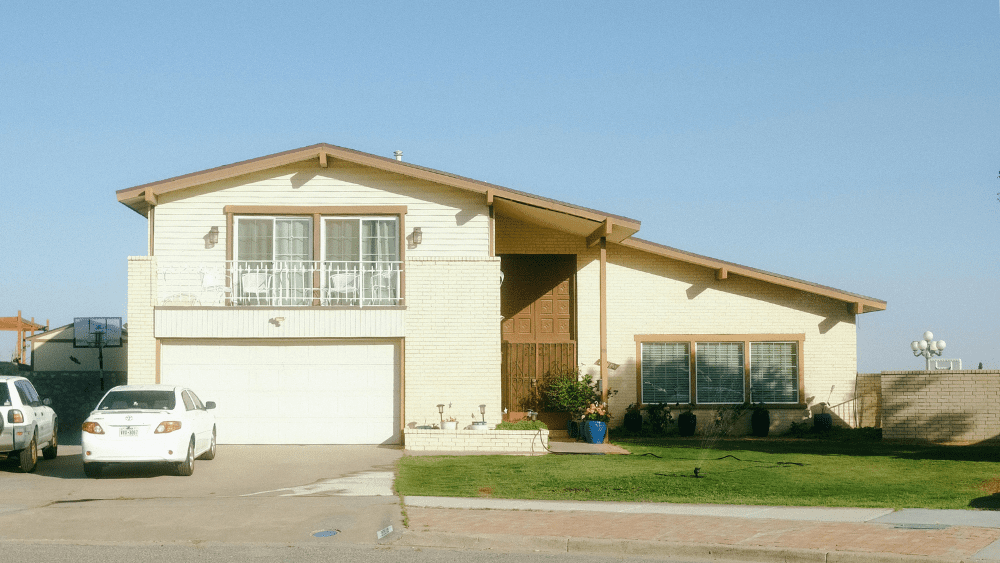Home repairs in Illinois can get expensive fast, from leaky roofs to old plumbing issues. For a lot of homeowners, unexpected repairs can throw off budgets and cause stress. But what if there was a way to ease the load while also protecting your home’s value? Grants for home repairs in Illinois do just that, offering financial help to tackle important repairs without draining your savings.
According to a recent study, Illinois residents are especially eager to upgrade their homes, averaging 470 home improvement searches per 100,000 people each month — 54% higher than the national average. The median sale price of homes in the Prairie State hit $322,000 in July 2025, up 4.6% from last year, showing why keeping your home in top shape really matters.
Step one: Talk to an expert!
Selling your house soon? Connect with a top agent near you to get an expert opinion on how much your house will sell for, what to fix before listing, and the latest local housing market trends.
Keeping homes safe and livable has always been important in Illinois, and it got a bigger push with the Illinois Affordable Housing Act, which helps low- and very low-income households. For many families, making a home work means having the funds to fix both the inside and outside.
That’s where home repair grants come in: they make it possible to stay in a safe, updated home without breaking the bank.
We dug into HUD data and checked out some of the top counties in Illinois to get the full picture of these programs. Think of this guide as your go-to roadmap for home repair funding, so you can keep your home comfy, safe, and in good shape without the stress of surprise costs.
Home Repair and Accessibility Program (HRAP)
This helps low- and very low-income homeowners pay for health and safety fixes, accessibility upgrades, and roof repairs. Homeowners can get up to $45,000 for repairs or upgrades, or $21,500 if it’s just for a roof. The money comes as a three- or five-year forgivable loan, depending on what you use it for. To qualify, your household income has to be at or below 80% of the area median income (AMI).
CDBG Housing Rehabilitation Program
The Illinois Department of Commerce and Economic Opportunity supports low- to moderate-income communities with its Community Development Block Grant (CDBG) Housing Rehabilitation Program. It grants communities up to $650,000 or $60,000 per household to modernize and rehabilitate single-family homes.
Local government institutions apply for funding to improve infrastructure and provide safe housing for low-income or disabled individuals. Eligible activities would include:
- Replacement of main fixtures
- Garage builds
- Flood Insurance
- Accessibility features
Homeowners do not directly apply for grants. Rather, institutions need to apply and identify how the project will benefit 100% of low- to moderate-income individuals. As the homeowner, you can do your research to see if your community is eligible to receive a CDBG. Ineligible communities include those that receive HUD direct entitlements.
USDA Rural Development Single Family Housing Repair Loans & Grants
The USDA Rural Development supports rural communities across the U.S. to modernize structures and create updated, affordable housing through its Section 504 Home Repair Program. The program provides loans up to $40,000 at a 1% interest rate over 20 years for low-income individuals. However, grants up to $10,000 are offered for homeowners age 62 or older.
To be eligible, a homeowner must occupy the house in a permitted rural area, be unable to afford credit, and have an income that doesn’t exceed the county’s very low limit. For example, most 1- to 4-person income limits in Illinois are between $43,300 and $51,300, with Kendall County being an outlier at $66,200.
A homeowner can utilize the USDA Home Repair loan to modernize and improve homes, whereas the grant is specific to removing health hazards. Applicants must apply through the state’s RD office and work with a USDA home loan specialist for support.
FHA’s 203(k) Rehabilitation Mortgage Insurance
One federal home repair program to tap into is the FHA’s 203(k) Rehabilitation Mortgage Insurance. The FHA offers 203(k) insurance to support a homeowner’s purchase or refinance and repair of a single-family home.
The Standard 203(k) Mortgage program insures a single, long-term, fixed or adjustable rate loan on properties at least one year old and in need of no less than $5,000 in rehabilitation through improvement activities such as:
- Removing safety hazards
- Replacing plumbing
- Installing new floors
- Updating landscaping
You’ll need to pay attention to the FHA’s mortgage limits in your area, as the total value of the property cannot exceed that maximum. On average, counties across Illinois limit an FHA single-family mortgage to $524,225.
203(k) is a convenient and affordable option that saves the homeowner time and higher interest rates, making homeownership more accessible across income levels.
If you have a less extensive rehabilitation under your hands, the FHA has you covered with the Limited 203(k) Mortgage, financing up to $75,000 to cover improvement projects identified by an FHA appraiser or inspector.
How to find county and city-specific programs for home repair grants in Illinois
Several counties and cities in Illinois have their own home repair programs. They offer funding and help to make sure homes stay safe, functional, and comfortable. Using these local programs can make fixing up your home a lot easier while helping out your community.
Cook County
Cook County is Illinois’ most populated county, including the windy city itself — and, as such, it supports several low-income communities with homeownership. The Housing Authority of Cook County has built different programs to develop safe housing for low-income individuals, including vouchers for mortgage payments and rental assistance.
A few standout home repair programs across the county include:
- City of Chicago Home Repair: The Home Repair Program provides grants to Chicago households making up to 50% of the AMI ($48,000 for a two-person household). This financial assistance can be used for repairs to porches and roofs. The amount of the grant is determined based on availability and site inspection.
- Small Accessible Repairs for Seniors: The Small Accessible Repairs for Seniors (SARFS) program supports Chicago-based 60+-year-olds who make up to 80% of the AMI. The eligible rehabilitation includes improvements in smoke alarms, grab bars, and wheelchair ramps, minor accessibility upgrades to help senior citizens stay at home.
Learn more about home repair assistance in Cook County on its website to find a viable program for you.
Rock Island County
Rock Island City’s Housing Rehabilitation Program helps homeowners who need a hand getting repairs done. The financial assistance comes as a forgivable loan for income-eligible residents who own and live in their homes.
Approved repairs are meant to bring houses up to the City’s building standards and can include things like fixing major fixtures, updating water or sewer lines, improving energy efficiency, and adding accessibility features for seniors or people with disabilities.
To apply, residents need to fill out a simple application with basic info and meet requirements like up-to-date property taxes, homeowner’s insurance, and income within 80% of the area median ($62,550 for a two-person household).
Find more information about the housing rehabilitation program here.
Lake County
Lake County offers affordable housing for lower-income individuals, creating safe communities for those at or under 80% of the area’s median income. Here are some programs to note:
- CPAH Homeowner Rehabilitation Program: The Community Partners for Affordable Housing offers grants up to $40,000 and loans up to $20,000 at 3% interest to make safety, accessibility, and other home improvements. To be eligible, homeowners must be current on property taxes, be at or under 80% AMI, and require rehabilitation of their homes.
- Waukegan Housing Rehabilitation Program: Income-eligible homeowners who live in the city of Waukegan have access to the Housing Rehabilitation Program. The program provides no-interest deferred loans to cover either emergency repairs, such as collapsed sewer lines, or significant rehab projects.
Read up on more Lake County home repair opportunities here.
Kane County
Kane County, one of the most populated regions in Illinois, has dedicated services to support low-income communities with home rehabilitation. Some of its offerings include:
- Housing Rehabilitation Program: Income-eligible homeowners can receive up to $10,000 in grants to handle lead paint issues or $20,000 in zero-interest loans for other safety and accessibility improvements.
- Emergency Repair Program: Homeowners facing emergency issues, such as electrical or plumbing, can receive up to $10,000 in zero-interest, deferred payment loans. Eligibility requirements include meeting federal income limits, living in a Community Development Program area, and having sufficient equity to cover the loan.
Learn more about Kane County’s funds for home repairs here and find out if you qualify.
Other options for homeowners who do not qualify for home repair grants
Many home repair grants or loan programs come with strict eligibility requirements. Further, most support low- to moderate-income levels, usually at or under 80% AMI.
Aside from these eligibility requirements, the programs come with strict rules on how to use the funds. Many home upgrades that aren’t essential or do not check off health and accessibility functions are not allowed.
That said, if your project doesn’t fit these programs, there are still other funding options out there that can help you tackle home improvements creatively.
Use a HELOC to pay for repairs
A home equity line of credit (HELOC) is a way for homeowners to borrow against the value of their home. Like a credit card, a HELOC is a revolving source of funds with a maximum available credit secured by home equity. This type of financing usually comes with variable interest rates.
There are two phases to a HELOC: a drawing period and a repayment period. A draw period is a time, on average 10 years, in which you can draw from the available funds while making payments on only the interest. Upon completion of the draw period, you enter the repayment period and pay off the remaining balance, usually over 20 years.
A HELOC can be a good way to get emergency funds, especially if you have a major home repair and don’t qualify for income-based programs.
Consider a cash-out refinance
A cash-out refinance is another method to obtain funding for home repairs, especially if you’re considering major work. Simply put, it replaces your current mortgage with a new one that also provides additional cash funds. Most lenders only offer an 80% loan-to-value ratio, i.e., the loan can only be up to 80% of the home’s value.
Let’s say your current home’s appraised value is $200,000, and you owe $100,000 on your home. A cash-out refinance could give you a new mortgage of $160,000 (80% of the home’s value). You would pay off the old mortgage and use the remaining $60,000 for home repairs and closing costs.
This funding option isn’t necessarily for an emergency repair situation. Most lenders want to see any health and safety hazards that might show up on an appraisal completed before a cash-out refinance. Further, the refinance puts you in more debt as the new mortgage may come with steeper interest rates and closing costs.
Sell your home as-is and move on
Do you have a lot of repairs to make? Would you prefer to downsize as the birds have flown the nest? Don’t want to refinance or open a line of credit? If the answer is yes to any of these (or an endless stream of other questions), selling your home as-is might be your best option.
Any repair project comes with expected and unexpected hassles. The value you’d create in your home needs to be worth the effort, and you may decide it’s not. You should first carefully review the pros and cons before deciding on selling, including:
- Pro: Leaving repairs up to the newest owner
- Con: Scaring off some buyers, as “as-is” is seen as a red flag
- Pro: Selling more quickly than traditional processes
- Con: Receiving a lower offer than expected
Selling a home “as-is” works a bit differently than a traditional sale. That said, our Simple Sale platform is a great place to start if you decide to go this route. Just share a few details with a home consultant, and you could get a payout in as little as 7 days, making the process fast, easy, and stress-free.
Skip The Prep Work and Request a Cash Offer on Your Illinois Home
Wanting to skip repairs, downsize, and move on? HomeLight’s Simple Sale can provide a cash offer for your Illinois home in as little as one week, with cash in hand in as little as 7 days. Without the prep work and months of your life focused on repairs, you can move with ease and certainty.
Find the best program for you
You don’t need to give up on your Illinois home in the face of repairs, extensive or otherwise. Most counties across the state provide different financial resources to support the habitability of your home.
Whether a grant, low-interest loan, or HELOC, you don’t need to deprioritize improvements in the face of financial constraints. With a little research and this guide, you can make the right moves to stay comfortably in your home.
Want to see what your home could be worth if you make repairs? Try HomeLight’s Home Value Estimator to get a quick, personalized estimate.
Header Image Source: (jake grella / Unsplash)



















 English (US) ·
English (US) ·